Jaypur – A heritage site with rich terracotta work
The family temples of the Duttas and the Deys in Jaypur, a nondescript village in Bankura, with rich terracotta work on their walls, are counting their days before nature and time run their course. Let’s pack our bags and head to this treasure trove before all these are lost forever.
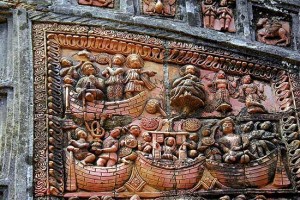 The Damodar temple of the Dutta family can be our first stop. A navaratna (nine-tower) temple dedicated to lord Shiva stands in a small arena inside a dilapidated building. As the foundation slab is missing, the actual year of establishment cannot be ascertained now. From its style, it seems to be a temple of the mid-19th century.
The Damodar temple of the Dutta family can be our first stop. A navaratna (nine-tower) temple dedicated to lord Shiva stands in a small arena inside a dilapidated building. As the foundation slab is missing, the actual year of establishment cannot be ascertained now. From its style, it seems to be a temple of the mid-19th century.
The panels, now mostly found on the front and the right side of the temple, are a feast for the eyes. The front panels are divided in three blocks, with a gate under each block. The right side of the panel depicts the Kurukshetra war from Mahabharat.
Here we find Arjun riding a chariot driven by Krishna and aiming his arrow at another warrior, probably Karna.
A monkey-faced figure on top of Arjun’s chariot indicates the presence of Hanuman in the war of Mahabharat, as a helping hand to the Pandavas.
On the right side of the temple, the terracotta panels depict tales from Ramayan.
The most striking figure is that of Ravana, with 10 heads and 10 hands, riding the Pushpak Rath and attacking Ram.
It is interesting to note that Ravana is seen holding a trident and a sword in his hands. Such a posture of Ravana is rare. The panel fringes are filled with sequences of fighting between the vanar sena and the demons.
The middle block is dedicated to Krishna leela and vignettes of Bengal’s social life.
The top row shows Radha and Krishna under a bakul tree. Several musicians with instruments are lined up on both sides.
The row beneath this shows a man relaxing on a chair with female companions around him. The lowest row is decorated with parrot and peacock motifs.
On the left wall is Vishnu, in his ananta shayan posture.
At the rear of the temple, we find Mahishashuramardini Durga with Ganesh, Kartik, Saraswati and Lakshmi. All panels are bordered with floral motifs.
The Dey family temple, with another set of artworks in burnt clay, was built in 1843.
It is also a navaratna structure. Structures of an animal similar to a crocodile are placed on the corners of the temple towers. This is a common feature of the Orissa school of temple architecture.
There are three arched gates on the front with terracotta panels above each of them.
The lower row above the middle gate has two lions facing each other — an obvious influence of European architecture. Floral motifs fill the gap between the two lions.
The central panel is bordered with a series of miniature statues of the Vishnu’s Dasavatars. Many facets of social life in Bengal find place on the panels on the side walls: a man with two women companions, the departure of a newly wed couple on a boat, girls with gifts in their hands, a boatman and two parrots are some of the attractions.
Another frame shows men in European attire travelling on a boat while a woman takes a ride in another covered boat.
One European man is seen on the boat with a group of dancers while another is found in a relaxed pose.
How to go?
Jaypur is nearly 18km southeast of Bishnupur town. Rupashi Bangla which departs from Howrah station at 6am reaches Bishnupur by 10.30am. We can reach Jaypur by bus or by hiring a car from Bishnupur station. One phase of this journey will be through the reserved forest of Jaypur. A rickshaw can be hired for visiting temples.
Where to stay?
We can make a day-trip or choose to stay in Bishnupur. There are several hotels in Bishnupur. You have to take the meals also from Bishnupur because there are no good eateries in Jaypur. It is better to carry water and snacks for the road.

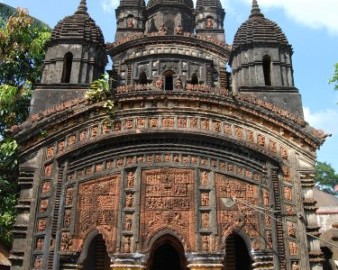
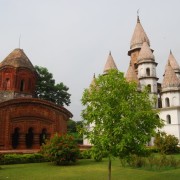
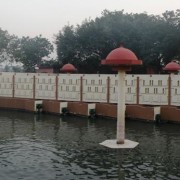
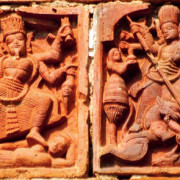
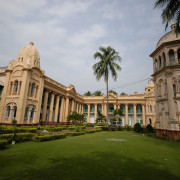
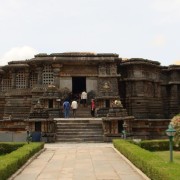
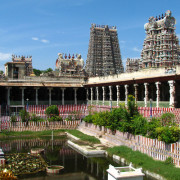
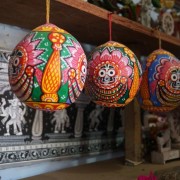
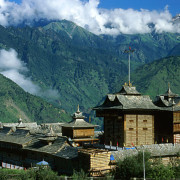


Leave a Reply
Want to join the discussion?Feel free to contribute!